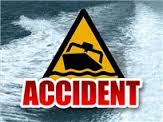UM Extension Launches New Tool For Livestock Producers Working With Forage & Feedstuffs
The University of Missouri Extension Office has announced the launch of a new tool to help livestock producers who are wanting to buy or sell forage and other feedstuffs.
Extension Field Specialist Gene Schmitz says the online tool is called “Feedstuff Finder” and allows for producers to sort by forage or co-product type along with a map highlighting sources of selected feeds, price, seller contact information, feed quality and other information.
The data base is free for producers and available via a link on the M-U Extension Center’s website https://feedstufffinder.org
More Info:
MU Extension recently announced the launch of a new tool to assist livestock producers seeking to buy or sell forage and other feedstuffs.
The online tool is called Feedstuff Finder and is very easy to use. Producers looking for feedstuffs can sort by forage or co-product type. A map highlighting sources of the selected feeds allows users to locate feeds and find out additional information, such as price, seller contact information, feed quality analysis, etc. An additional feature is the ability to calculate estimated trucking costs.
Producers looking to sell feedstuffs can also list their products by creating a free account and then adding in the appropriate information about the feedstuffs they have available for sale.
When purchasing bales, baleage, or silage, it is highly recommended to ask for both bale weight and a forage test analysis. This provides valuable information on the feeding quality of a forage and can help determine if additional supplementation is necessary and what nutrients might need to be supplemented.
There are three important things to look for on a forage test. First is the percent moisture. Water dilutes the concentration of nutrients in a feedstuff and knowing moisture content also helps identify potential issues with haylage or silage. Always compare feed quality components and price per unit of nutrient on a dry matter basis.
Next, look at energy values. Total digestible nutrients (TDN) is the easiest way to evaluate energy values. Larger values indicate more energy is available from a feedstuff. The fiber component acid detergent fiber (ADF) is used to calculate energy values. The lower the ADF, the higher the estimated energy value of a feedstuff.
Finally, consider the crude protein (CP) value. As a general rule, the more mature the forage, the lower the CP and TDN values will be. But it is important to know what these values are.
To illustrate the need for forage testing, I compared eight samples of hybrid forage sorghum dry hay that I’ve received in 2023. TDN ranged from 54% to 62% on a dry matter basis. CP ranged from 5.4% to 12.7% on a dry matter basis. That variation occurred in only eight samples. Additionally, I’ve received forage test results for corn stalks, corn baleage, corn silage, summer annual hay, haylage, and silage, wheat hay and haylage, rye hay and haylage, peanut hay, bermudagrass hay and johnsongrass hay. Many of these forages are new to our area, and therefore we have no idea on the nutritional value of these feeds. Forage testing in this case is absolutely necessary in order to develop reasonable supplementation strategies.
The website https://feedstufffinder.org will take you to the free site to shop for feed ingredients or advertise feeds that you may have for sale. For further information on interpreting forage tests and developing winter feeding programs, contact me at schmitze@missouri.edu or call the Pettis County Extension Center at 660-827-0591.
##
University of Missouri Extension does not discriminate on the basis of race, color, national origin, sex, sexual orientation, religion, age, disability or status as a Vietnam-era veteran in employment or programs.



